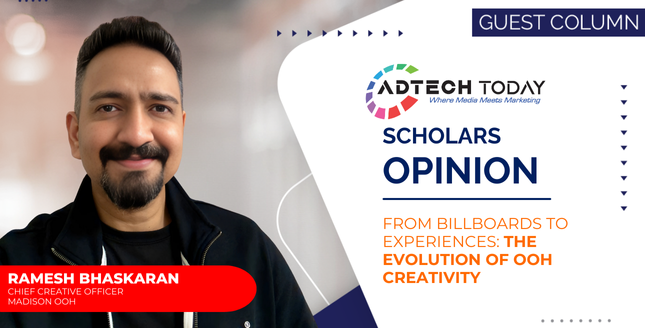

From hand-painted hoardings to AI-powered experiences — oh man, we’ve come a long way in our OOH journey! Today, with technology evolving faster than ever, we stand at an exciting turning point that’s reshaping how audiences experience brand messages.
Billboards are no longer just passive frames in the skyline.
They make you think. Take action. Interact. Sometimes they double up as a weather forecast or a cricket scoreboard. Some save lives during floods, others offer shelter. They harvest rainwater, save electricity, purify air, and even provide water for birds. The list keeps growing — and so does the role of OOH in our lives.
In today’s attention-driven era, billboards haven’t just survived — they’ve transformed into immersive, real-world experiences. They share your traffic jam, celebrate your festivals, and breathe the same air you do. OOH is no longer just about visibility; it’s about genuine connection, conversation, and creating tangible impact in the physical world.
The magic happens when ideas come from a place of truth. That’s when OOH moves from functional to unforgettable. At Madison OOH, some of our most fulfilling campaigns were born from this honest, heartfelt thinking.
Take Ganesh Chaturthi, for example. Most brands look for ways to join the celebrations, but for DS Group’s iconic Pulse Candy, we wanted to do something truly unique. Pulse is famous for its burst of unexpected flavours, and Bappa is known for his countless avatars. That thought sparked Pulse Ek Avatar, Anek — an interactive AI-powered campaign where devotees could create their own personalised Bappa avatars in real time. People weren’t just engaging with the brand — they were co-creating, sharing, and celebrating. We didn’t just give them an ad. We gave them a moment they’d never forget.
Then there was Keeping It Cool, Even for the Birds for Cello. This one started with a casual summer chat in our office, AC set to 20 degrees. Someone said, “We have fans, ACs, and cold water… but what about the birds?” That simple question struck a chord. We proposed integrating water bowls directly into Cello’s billboards, turning them into life-saving touchpoints for birds during peak summer. The idea was simple, the impact real — a place for our feathered friends to sip, dip, and survive the heat. The brand loved it. We loved it. And maybe best of all, many of us started keeping water outside our own windows. That’s when you know an idea works — when it changes everyday behaviour.
For me, OOH has always been the poetry of public spaces — the smile at a witty bus shelter line, the pause at a traffic light not because it’s red, but because something on the billboard made you feel something. As audiences evolve, so must we. Impact isn’t just about bigger hoardings anymore; it’s about better experiences. We must make people do, feel, share.
The best ideas rarely spark in boardrooms.
They’re born in the streets — while chatting with the chaiwala, inching through endless traffic, humming along to the radio, or simply watching life unfold on the road. It’s in staying connected to these everyday moments that our ideas truly come alive.
At Madison, we’re not just placing media — we’re placing meaning. We ask ourselves: How can we make a passerby pause at 8 a.m. on a Monday? How can we make them interact, smile, or take a picture? Sometimes it’s high-tech; sometimes it’s just seeing an ordinary moment in an extraordinary way — like a thirsty bird or a festive wish.
Awards are wonderful — and I’m proud of every Gold, Silver, and Bronze we’ve earned — but what stays with me are the reactions: a child pointing in awe at an installation, a mother recording her son’s AI-generated Ganesh avatar, a flock of pigeons huddled around a branded water bowl. That’s the OOH I believe in — the kind of work that, even in an age of endless scrolls and skippable ads, still makes people stop, look, and feel.